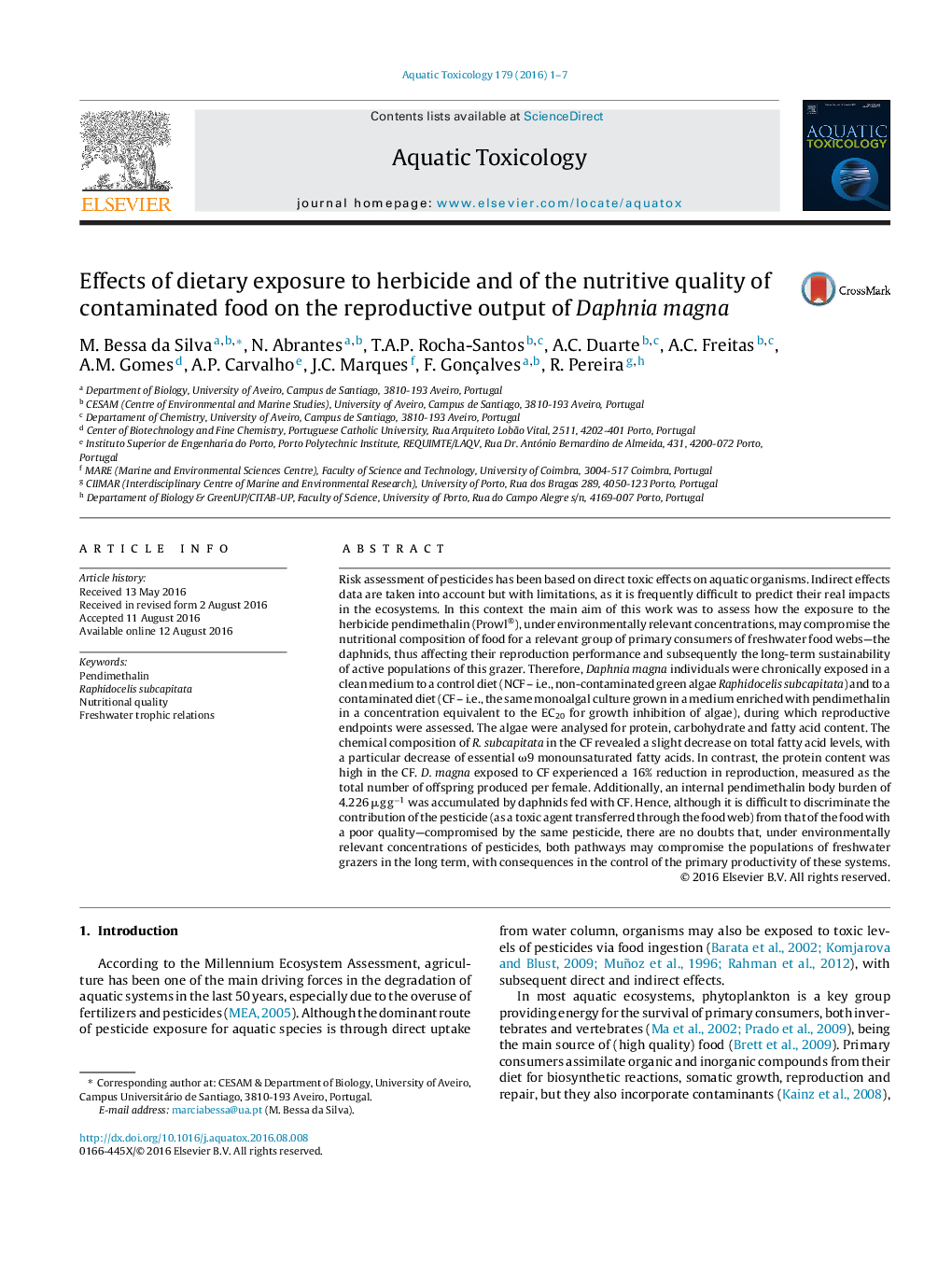| کد مقاله | کد نشریه | سال انتشار | مقاله انگلیسی | نسخه تمام متن |
|---|---|---|---|---|
| 4528884 | 1625926 | 2016 | 7 صفحه PDF | دانلود رایگان |

• The exposure to the herbicide pendimethalin (Prowl®) and its trophic transfer in the aquatic food chain were assessed.
• Algae previously exposed to sub-lethal concentrations of Prowl® served as food source for Daphnia.
• The herbicide had injurious effects on algal nutritional composition, particularly on protein and fatty acid content.
• The uptake of pendimethalin through food provokes its bioaccumulation and also reproduction impairments in daphnids.
• Both the low quality of food and the bioaccumulation via food uptake were likely responsible for Daphnia alterations.
Risk assessment of pesticides has been based on direct toxic effects on aquatic organisms. Indirect effects data are taken into account but with limitations, as it is frequently difficult to predict their real impacts in the ecosystems. In this context the main aim of this work was to assess how the exposure to the herbicide pendimethalin (Prowl®), under environmentally relevant concentrations, may compromise the nutritional composition of food for a relevant group of primary consumers of freshwater food webs—the daphnids, thus affecting their reproduction performance and subsequently the long-term sustainability of active populations of this grazer. Therefore, Daphnia magna individuals were chronically exposed in a clean medium to a control diet (NCF – i.e., non-contaminated green algae Raphidocelis subcapitata) and to a contaminated diet (CF – i.e., the same monoalgal culture grown in a medium enriched with pendimethalin in a concentration equivalent to the EC20 for growth inhibition of algae), during which reproductive endpoints were assessed. The algae were analysed for protein, carbohydrate and fatty acid content. The chemical composition of R. subcapitata in the CF revealed a slight decrease on total fatty acid levels, with a particular decrease of essential ω9 monounsaturated fatty acids. In contrast, the protein content was high in the CF. D. magna exposed to CF experienced a 16% reduction in reproduction, measured as the total number of offspring produced per female. Additionally, an internal pendimethalin body burden of 4.226 μg g−1 was accumulated by daphnids fed with CF. Hence, although it is difficult to discriminate the contribution of the pesticide (as a toxic agent transferred through the food web) from that of the food with a poor quality—compromised by the same pesticide, there are no doubts that, under environmentally relevant concentrations of pesticides, both pathways may compromise the populations of freshwater grazers in the long term, with consequences in the control of the primary productivity of these systems.
Journal: Aquatic Toxicology - Volume 179, October 2016, Pages 1–7